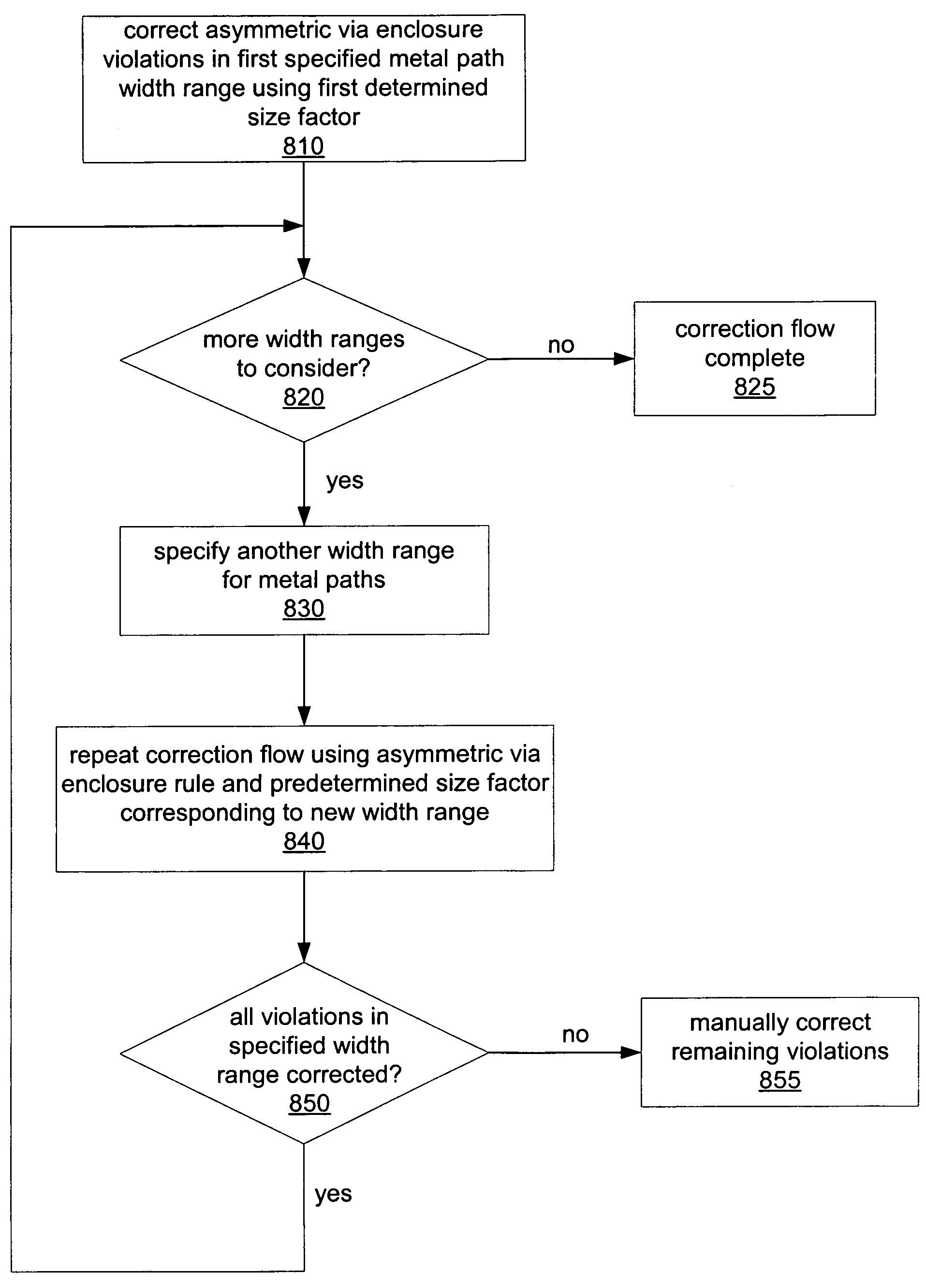Automated correction of asymmetric enclosure rule violations in a design layout
a technology of automatic correction and design layout, applied in computer aided design, program control, instruments, etc., can solve the problems of complex and time-consuming process of electronic circuit design, integrated circuit design, and high design effort for detailed design layou
- Summary
- Abstract
- Description
- Claims
- Application Information
AI Technical Summary
Benefits of technology
Problems solved by technology
Method used
Image
Examples
Embodiment Construction
[0036]One or more EDA tools may be used to place geometries on various layers of a design layout and to connect them together during creation of the design layout. During a Design Rule Check, or DRC, various design rules may be checked against the design layout. In a modern semiconductor design, it may be desirable to apply different sets of rules to the geometries (i.e., features) on a given layer depending upon their relative size. For example, many design layers, especially those that are used for implementing gates (e.g., polysilicon layers) and wires (e.g., metal layers) may be divided into different classes depending upon their minimum width in any dimension. Objects in different width classes, or ranges, may adhere to different design rules, such as spacing rules, via enclosure rules, and others, to improve wafer fabrication results.
[0037]An enclosure check is a common function that is available in most EDA tools performing a DRC. This type of check measures the enclosure of ...
PUM
 Login to View More
Login to View More Abstract
Description
Claims
Application Information
 Login to View More
Login to View More - R&D
- Intellectual Property
- Life Sciences
- Materials
- Tech Scout
- Unparalleled Data Quality
- Higher Quality Content
- 60% Fewer Hallucinations
Browse by: Latest US Patents, China's latest patents, Technical Efficacy Thesaurus, Application Domain, Technology Topic, Popular Technical Reports.
© 2025 PatSnap. All rights reserved.Legal|Privacy policy|Modern Slavery Act Transparency Statement|Sitemap|About US| Contact US: help@patsnap.com



